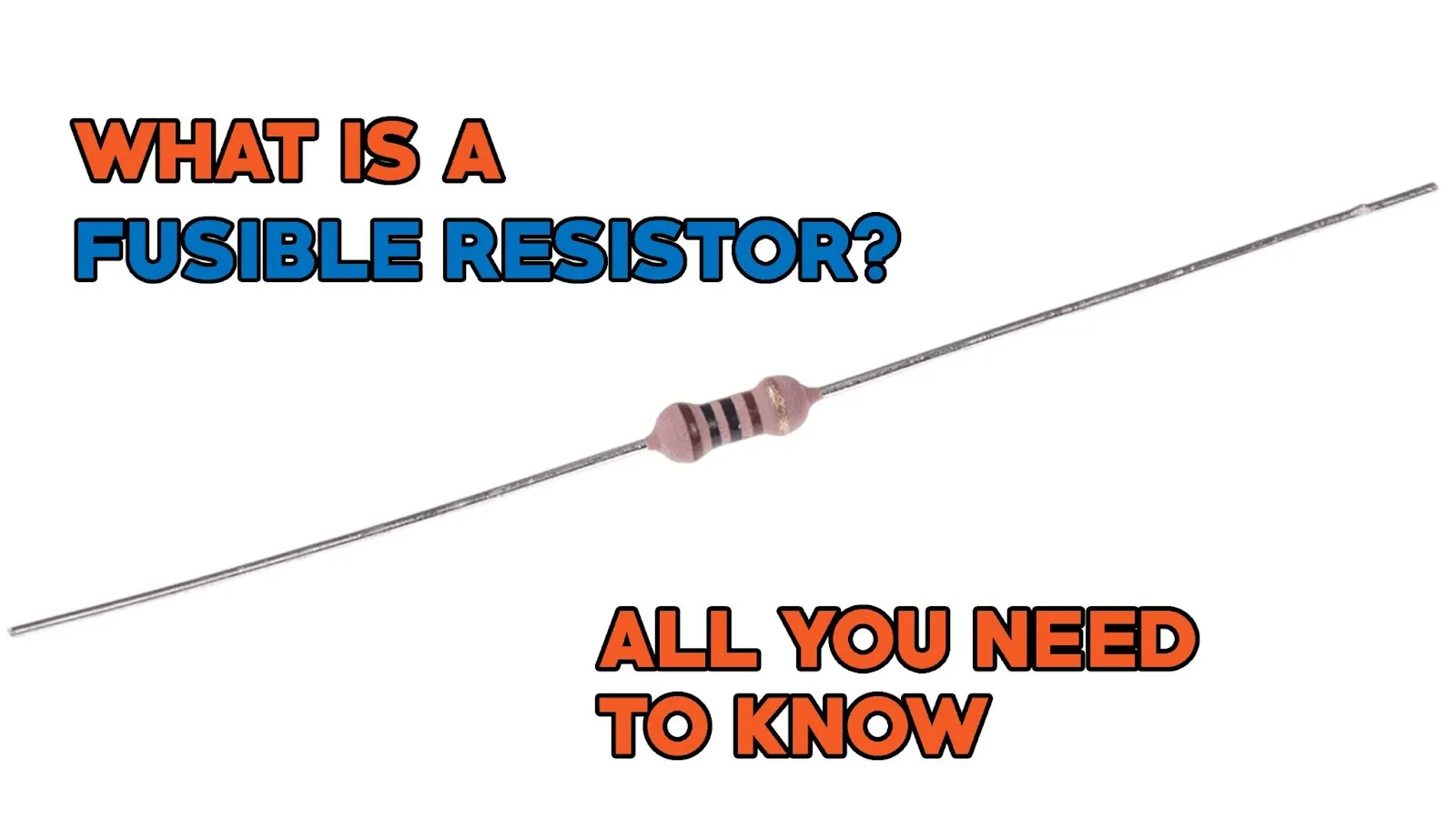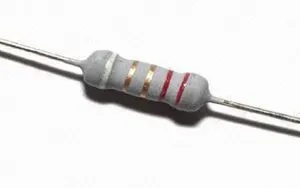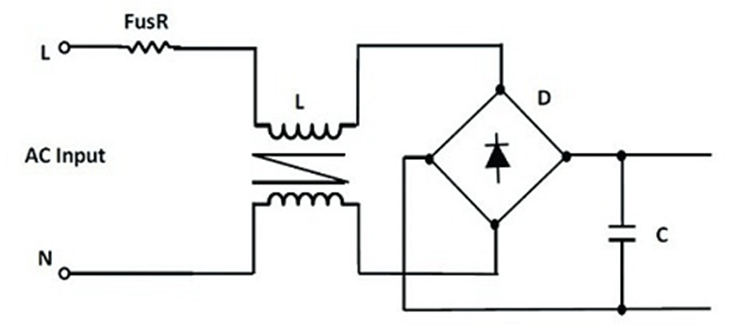What is a Fusible Resistor? [Everything You Need to Know]
How does the electric equipment in your house work? How do industrial facilities keep their operations running behind the scenes? If you don't know, a resistor fusible is one of the crucial components in these scenarios. Electrical currents within appliances and structures must be regulated and controlled safely by these resistors. So are you curious and want to know what is a Fusible Resistor? If Yes, then you come to the right place. In this article, I am going to discuss everything about it.

What is a Fusible Resistor?
An electrical resistor that is rated for normal operation but designed to fail in a controlled manner is known as a fusible resistor. In this resistor, high-power resistors are welded together in a ceramic enclosure and are then used as high-powered resistors. Shorting out on a fusible resistor can result in the material encasing the melted material encasing the melted resistor if there is too much current flowing through it.
Despite their intended failure, these devices may require replacement if they are designed to be used only once.

Fusible Resistor
How Do Fusible Resistors Work?
Over-voltage conditions are protected by fusible resistors. A fuse opens when the voltage exceeds its rated value, just like they do when a circuit is overloaded with power. In this way, excessive current flow is prevented from causing further damage to the circuit. Any current flowing through the circuit is stopped when the resistor opens. As a result, overloaded circuits are prevented from causing further damage to components.
When used in a particular application, a fusible resistor must be sized appropriately in order to function properly. Usually, these resistors have lower wattages because they are restricted to handling up to their rated current. The circuit will be protected against overcurrent damage by opening before it becomes damaged. Fusible resistors should be replaced if they open.
In a variety of applications that require voltage control, such as automotive, appliances, computers, and other electronic equipment, fusible resistors are used. Installers and maintenance personnel can benefit from their ease of use and effective protection from electrical damage. Using a fusible resistor, you can detect an overvoltage condition quickly and prevent further damage to components and wires.
Fusible Resistor Construction
Ceramic core and wire windings provide a high level of resistance. An anti-hygroscopic resin or epoxy container houses the entire assembly, which is covered with a unique glaze. Fusible resistors have an increasing resistance as their temperature increases. The resistor's current limiting and overcurrent fuses properties make it highly useful as a protection device against transient overcurrents. For making a fusible resistor, there are two common methods:

As a first step, two end caps are used to connect the ends of metal films of high resistance. A non-metallic element is wound into a coil and coated with a thin metal layer.
Fusible Resistor Circuit
The charger circuit below uses a fusible resistor. Inrush currents are usually stopped by fuse resistors. Resistors of this type are used in chargers and power supplies as overcurrent components. Inrush current is controlled and overcurrent is protected by this circuit.

NTC thermistors and fuses can also be used to restrict inrush currents and protect against overcurrents. Using Fuse resistors instead of thermistors and fuses can reduce space usage. Fusible resistors, however, generate heat, which may require some spacing between components. In the case of resistors rated up to ten, other parts require a separation of 0.5 inches. In the case of resistors rated above 10W, a 1-inch gap must be provided.
Applications of Fusible Resistor
Short circuits can sometimes occur in electrical circuits, which require fusible resistors to prevent damage. When a short circuit occurs, any harm or fire will be prevented.
By virtue of its resistance function, this resistor is advantageous for reducing inrush current.
Power supply or chargers contain this resistor as one of the most important components above current.
Two purposes are served by fusible resistors. As soon as the power source is exceeded, it acts as a resistor and restricts current. A fuse acts as a protection device for various circuit components whenever the power rating is exceeded.
Disadvantages of Fusible Resistors
Immediately after they have blown, fusible resistors must be replaced.
In precision circuits, they are not suitable because they are less accurate than other types of resistors.
Compared to other overcurrent protection devices, fusible resistors take a long time to react because they depend on a physical property (melting). Before the fuse blows, the circuit can be damaged.
In comparison to other resistor types, they are relatively expensive.
It's also possible for fusible resistors to blow unexpectedly as a result of environmental factors such as humidity and temperature.
Their limited ability to handle large currents makes them unsuitable for high power applications. Circuits with low power consumption are typically the only ones that use them.
Are fusible resistors replaceable with normal resistors?
Normal resistors cannot be used in place of fusible resistors. Whenever an electrical circuit is overloaded, a fusible resistor burns out or disconnects it safely. Using this prevents electronic devices from catching fire due to dangerous currents. Fusible resistors cannot be substituted with normal resistors since normal resistors do not have this capability. In order to ensure safety and reliability, it's important to use the right kind of component.
Are resistors used as fuses?
Resistors can be used to make fuses. Fusible resistors are components of this type. Fusible resistors have nonconductive cores that are wrapped around substances like epoxy or ceramic that act as insulators. The heat generated by the resistor breaks the circuit when the current passing through it exceeds its rated value.
By doing so, further current cannot flow, preventing damage to downstream components. As well as circuit protection, fusible resistors are used to limit power, suppress inrush currents, and protect against overvoltages. Their use in various circuits and systems makes them valuable components.
Faqs
Question 1: How do you use a fusible resistor?
Answer: A fusible resistor reduces inrush current flow by decreasing its resistance. The charger or power supply circuit uses this resistor as the overcurrent component that has a resistance of 10 ohms. Inrush current is restricted and overcurrent is protected by this circuit.
Question 2: Fusible resistors have a color code. What is it?
Answer: In general, a wirewound resistor has a fifth black band. It is classified as a fusible resistor if a fifth band is also white. One black band in the center of the resistor indicates zero ohms.
Question 3: How are fusible resistors rated?
Answer: Fusible resistors are evaluated by their resistance value and power rating. A fuse element's rating is determined by the current or time required to blow it. To ensure proper protection, it is essential to select the appropriate fusible resistor.
Question 4: How suitable are fusible resistors for applications requiring high precision?
Answer: Because of the tolerable nature of fuse resistors and the possibility for the resistance to vary after a fuse has blown, they are not suitable for high-precision applications. It may be advantageous to use specialized precision resistors for such applications.
Final Thoughts
Fires and other damages may be prevented by fusible resistors, which protect electrical equipment from dangerous current overloads. They are often less expensive than other types of circuit protection devices because of their cost effectiveness and ability to react quickly to short circuits. In order to avoid excessive currents, it is imperative to choose the right fusible resistor for a particular application.
Furthermore, I hope after reading our article which is about What is a Fusible Resistor, your confusion got cleared! If you still have confusion in fuse and resistor, then you can ask in the comment section. Thank You!
Related Articles
Inductor vs Resistor: What’s the Differences?
Understanding Coupled Inductors: Operations and Practical Applications
CBC3225T102KR Inductors: Features, Specifications, and Datasheet
How to Charge Capacitor Without Resistor?
Inductor vs Resistor: What’s the Differences?
How Does a Resistor Work [Fully Explained]
Wirewound Resistor: An In-Depth Overview
Is a Fuse a Resistor? [Everything Explained]
What is a Fusible Resistor? [Everything You Need to Know]
What is a Load Resistor? [Everything Explained]
A Primers on Circulator and Isolators
What is Amorphous Silicon Solar Cell?
Flexible Sensor Complete Guide










